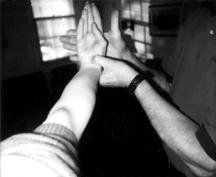On Oct. 21, 2025, a judge in Florida issued a groundbreaking decision in Complete Care v State Farm, 25-CA-1063. It concerns a fact pattern that many chiropractic doctors have faced wherein an insurer, such as State Farm or Allstate, decides to simply stop paying all claims submitted by a healthcare provider.
| Digital ExclusiveImproved Test for Carpal Tunnel Syndrome
Carpal tunnel syndrome may present with a variety of signs and symptoms which seldom appear together. Five percent of patients with severe symptoms and signs have normal electrical studies.1 A positive percussion sign (Tinel), Phalen's test, weakness or atrophy of the thenar muscles, sensory or autonomic disturbances of the radial 3 1/2 digits may or may not be present. Therefore, when a test comes along that has a significantly higher sensitivity and specificity percentage than the usual Phalen and Tinel tests, it's worthwhile learning.
Remember the definitions of sensitivity and specificity as it has become a standard way of expressing the validity of diagnostic tests. Sensitivity is synonymous for the true positive rate.2 True positives are patients with the disease and a positive test result. For example, an MRI might show a herniated disc associated with an absent Achilles' reflex. Specificity refers to the true negative rate. True negatives are patients without disease and a negative test result; for example, a negative MRI and normal reflexes.
Tetro et al.,3 felt that by combining wrist flexion with direct compression over the median nerve at the carpal tunnel, there would be an increase in the local ischemia to the median nerve to cause rapid and reproducible symptoms. This test gave a sensitivity of 82% and a specificity of 99% compared to Phalen's test (61% sensitivity and 83% specificity) and Tinel's

The wrist flexion-nerve compression test is performed with the elbow extended, the forearm in supination and the wrist flexed to its end range. I spoke to Dr. Tetro, who stated that although his article stated 60 degrees of flexion, the wrist should be passively flexed by the examiner to a painless end-range which is not inhibited by other wrist problems that may be present (see Figure I).
Figure I: During examination, the wrist should be passively flexed to a painless end range that is not inhibited by other problems with the patient's wrist.
Even, constant digital pressure is then applied with one thumb over the median nerve at the carpal tunnel. The test was considered positive with parasthesiae or numbness occurring in the distribution of the median nerve when symptoms occurred within 20 seconds. The 20 second cutoff time was the optimal time since as the time increased there was a loss in specificity.
References
- Spinner M, Spinner RJ. Management of nerve compression lesions of the upper extremity. In: Omer GE, Spinner M, Van Beek A. Management of Peripheral Nerve Problems, 2nd ed. Philadelphia: W.B. Saunders Company, 1998.
- Andersson GBJ, Deyo RA. History and physical examination in patients with herniated lumbar discs. - 1996;21(24S):10S-18S.
- Tetro AM, Evanoff BA, Hollstien SB, Gelberman RH. A new provocative test for carpal tunnel syndrome. J Bone Jt Surg 1998;80B:493-498.



